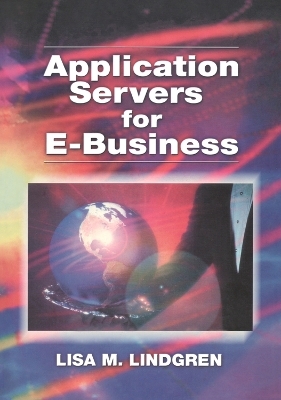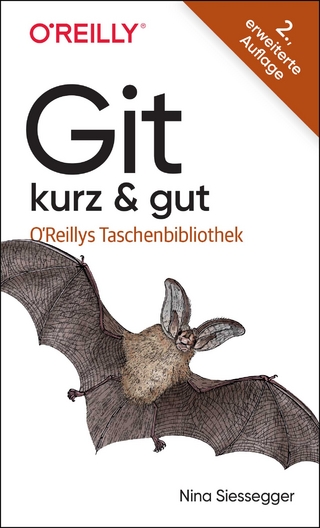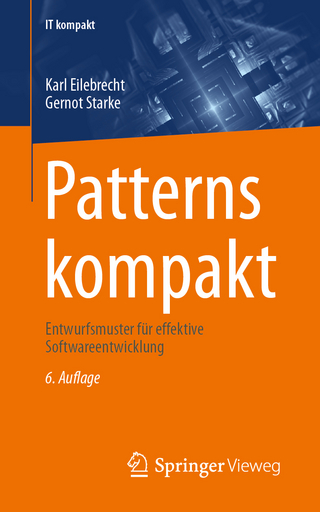
Application Servers for E-Business
Auerbach (Verlag)
978-0-8493-0827-7 (ISBN)
The modern application server is a complex platform that is the linchpin of an enterprise environment that includes a very wide range of technologies-web document formatting, web protocols, server-side scripts, servlets, applets, programming languages, distributed object technologies, security capabilities, directory and naming services, load balancing, system management, and others. As such, it can be a daunting task to try to comprehend these systems. Application Servers for E-Business helps you understand the use of application servers in e-business. The book presents a comprehensive overview of the technologies related to application servers in their facilitation of E-business. These technologies include CORBA, Java, Enterprise Java Beans, Java 2, web servers, and legacy systems. It explores the role these servers play in the modern enterprise IT infrastructure and the environment in which they operate. The material also includes implementation considerations for application servers, including security, scalability, load balancing, and fault tolerance.
Chapter one provides an overview of application servers, the evolution of computing that took us from hierarchical, mainframe-centric environments to the web model of computing, and the rationale for E-commerce and E-business. Chapters two through five cover specific technologies, from web browsers and servers to applets and servlets. Chapter three provides an overview of Java technologies, and chapter four covers CORBA. Chapter five discusses application servers in detail. Since application servers are increasingly supporting the key mission-critical processes of an enterprise, it is critical that organizations deploying them build in "enterprise-class" facilities for security, scalability, load balancing, fault tolerance, and management. Chapter six discusses these deployment design issues. The book concludes with chapter seven, a chapter that presents several examples of the advantages of application servers in large enterprises. It also presents two case studies that illustrate the decision process, and an overview of seventeen application servers. The chapters are organized in a straightforward manner, with section and subsections clearly indicated so that they can be easily skimmed. The comprehensive coverage offered in this book makes it an ideal reference for IT management and staff responsible for specifying, designing, evaluating, and implementing electronic commerce solutions.
Lindgren, Lisa E.
1 Introduction -- The Evolution of Computing Architectures -- Legacy Systems -- Client /Server -- Distributed Object Model -- Web Model -- Electronic Commerce and Electronic Business -- Three Stages of Web Presence -- Electronic Commerce -- Electronic Business -- What Is an Application Server? -- System Design Considerations -- Security -- Scalability -- Load Balancing -- Fault Tolerance -- Management -- Final Thoughts -- 2 A Survey of Web Technologies -- Overview of Web Browser and Server Operation -- Document Formatting -- HTML -- XML -- WML -- Client-side Programs -- Plug-ins -- Java Applets -- ActiveX Controls -- Server-side Programs -- Scripts, Forms, and APIs -- Java Servlets and Java Server Pages -- Active Server Pages -- Server-side Programs versus Application Servers -- Web-to-Host Solutions -- Traditional Host Access -- Applet-based Approaches -- HTML Conversion Approaches -- Host Integration Servers -- Final Thoughts -- 3 Java -- History and Overview of Java -- The Java Languages -- Java -- JavaScript -- The Execution Environment -- Java Virtual Machine -- Java Runtime Environment -- Java Development Kit -- Java Components and APIs -- JavaBeans -- Enterprise JavaBeans -- Enterprise Java APIs -- Java 2 Platform -- Java 2 Platform, Standard Edition -- Java 2 Platform, Enterprise Edition -- Java 2, Micro Edition -- Final Thoughts -- 4 CORBA -- History and Overview of CORBA -- CORBA Architecture -- Interface Definition Language (IDL) -- Object Request Broker (ORB) -- Client Implementation and Interfaces -- Server Object Implementation and Interfaces -- CORBA Interoperability -- Interoperability Architecture -- Inter-ORB Bridges -- General Inter-ORB Protocol (GIOP) -- Internet Inter-ORB Protocol (HOP) -- CORBA Interworking -- Language Mappings -- Final Thoughts -- 5 Application Servers -- Market Overview -- Market Size and Growth -- Market Drivers and Customer Requirements -- Application Outsourcing -- Diversity of Vendors and Solutions -- Battle of the Component Models -- Differentiation -- Pricing Models -- The Future of the Market -- A General Architecture -- Client Tier -- Client Access -- Client Architecture -- Middle Tier -- Elements in the Middle Tier -- Web Server /Application Server Design -- Application Server Architecture -- Application Server Platforms -- Back-end Tier -- Character-Based Systems -- Databases -- Transaction Processing Systems -- Message Queuing Systems -- Other Back-end Systems -- Development Tools -- Packaging -- Related Products -- Network-based Services -- Directory Services -- Queuing and Prioritization -- Web Filtering and Caching -- Load Balancers -- Final Thoughts -- 6 Design Issues for Enterprise Deployment of Application Servers -- Security -- Elements of Security -- Java Security -- CORBA Security -- An Overall Security Architecture -- Scalability -- Scalability Defined -- Network Scalability -- Server Scalability -- Application Server Scalability -- Overall Scalability in Multi-tier Environments -- Load Balancing -- Geographic and Local Load Balancing -- Load-balancing Approaches -- Application Server Load Balancing -- Fault Tolerance -- Network Fault Tolerance -- Server Fault Tolerance -- Application Server Fault Tolerance -- Management -- Application Server Administration -- End-to-End Management -- Final Thoughts -- 7 Trying It All Together -- Implementation Examples -- Case Study: Build Point Corporation -- Case Study: FoliQuest International N.V -- A Survey of Application Servers -- Allaire Corporation -- Art Technology Group (ATG) -- BEA Systems -- Bluestone Software -- Gemstone Systems -- HAHT Commerce, Inc -- IBM -- iE -- Inprise Corporation -- IONA Technologies -- iPlanet -- Microsoft -- Oracle Corporation -- Orbware Ltd -- Persistence Software -- SilverStream Software -- Sybase, Inc -- Summary of Offerings -- A Look Ahead -- About the Author -- References -- For More Information -- Index.
| Erscheint lt. Verlag | 23.1.2001 |
|---|---|
| Zusatzinfo | 11 Tables, black and white; 50 Illustrations, black and white |
| Verlagsort | London |
| Sprache | englisch |
| Maße | 178 x 254 mm |
| Gewicht | 530 g |
| Themenwelt | Mathematik / Informatik ► Informatik ► Software Entwicklung |
| Mathematik / Informatik ► Mathematik ► Finanz- / Wirtschaftsmathematik | |
| Wirtschaft ► Betriebswirtschaft / Management ► Marketing / Vertrieb | |
| Wirtschaft ► Betriebswirtschaft / Management ► Planung / Organisation | |
| ISBN-10 | 0-8493-0827-5 / 0849308275 |
| ISBN-13 | 978-0-8493-0827-7 / 9780849308277 |
| Zustand | Neuware |
| Informationen gemäß Produktsicherheitsverordnung (GPSR) | |
| Haben Sie eine Frage zum Produkt? |
aus dem Bereich


